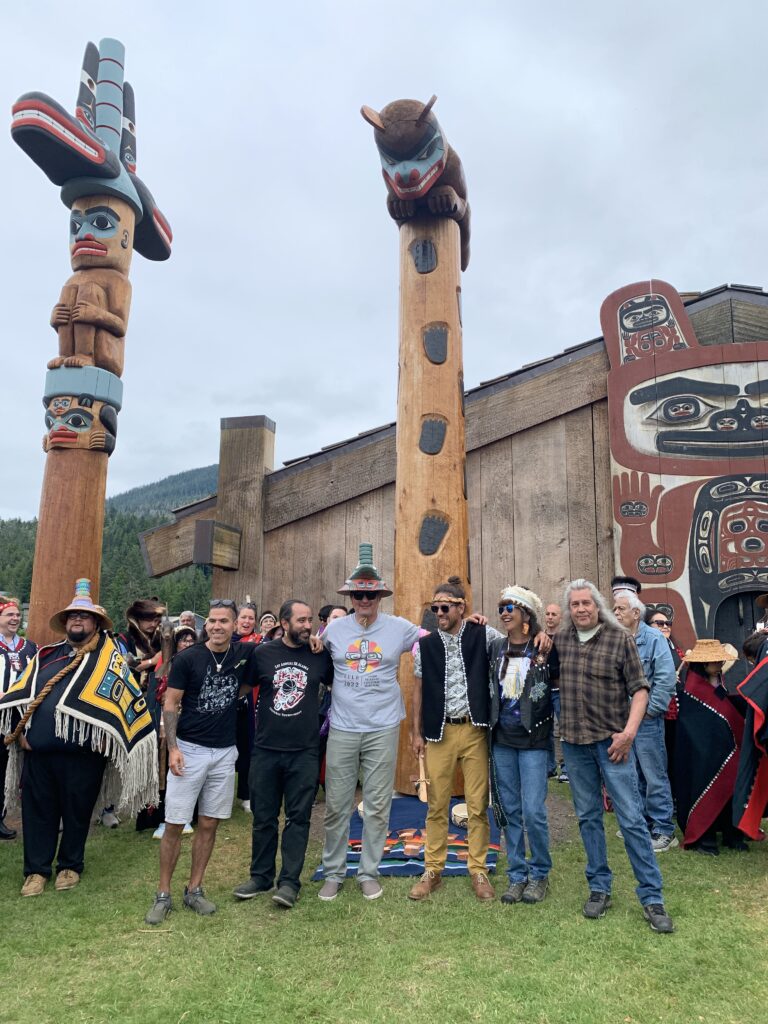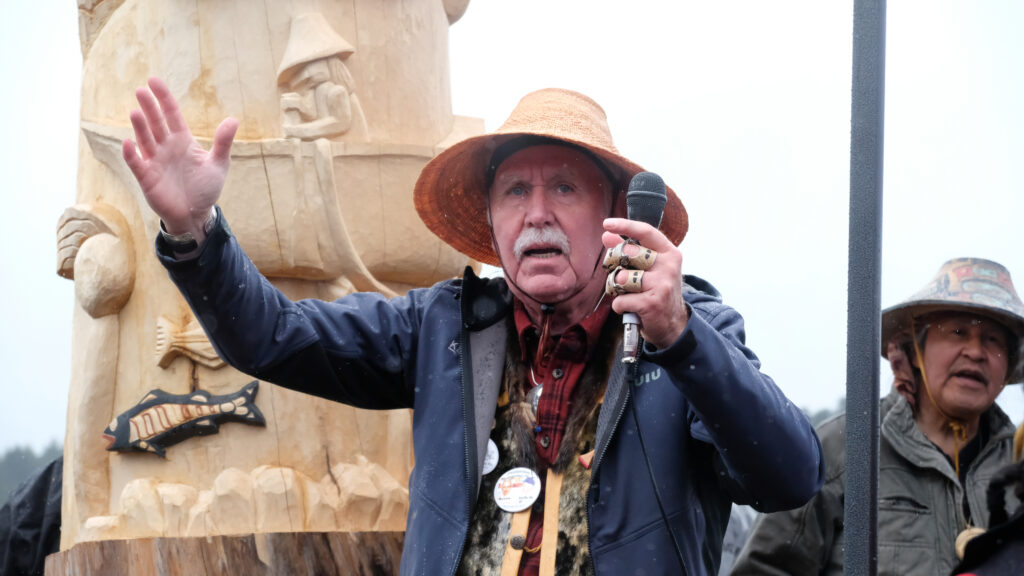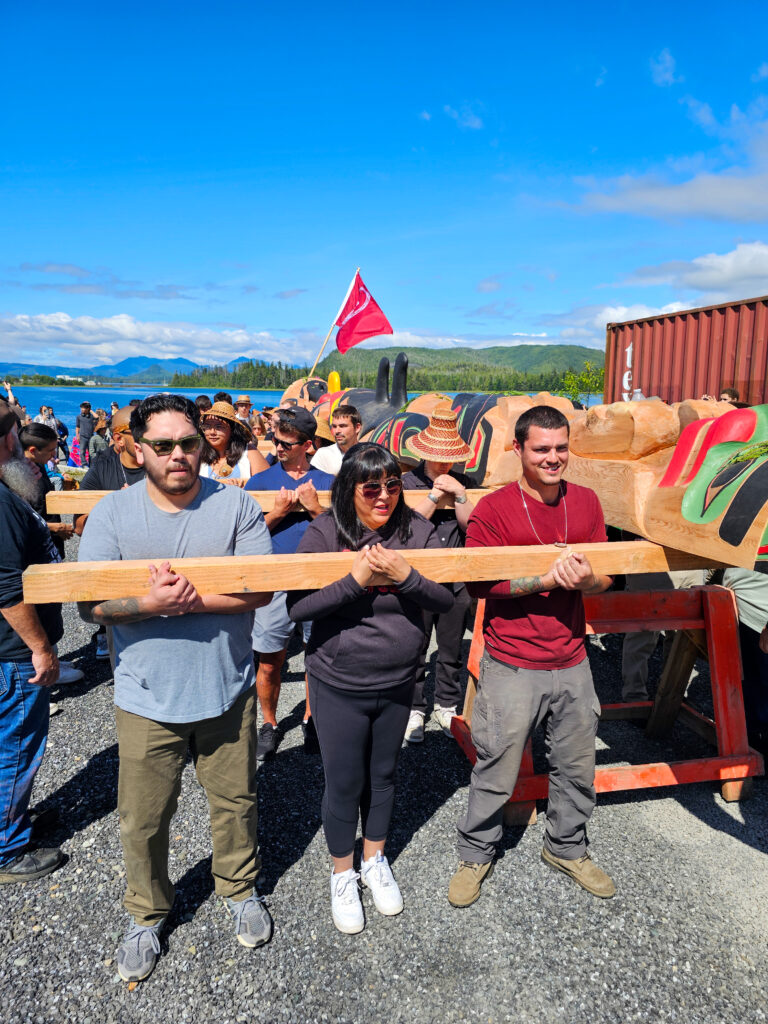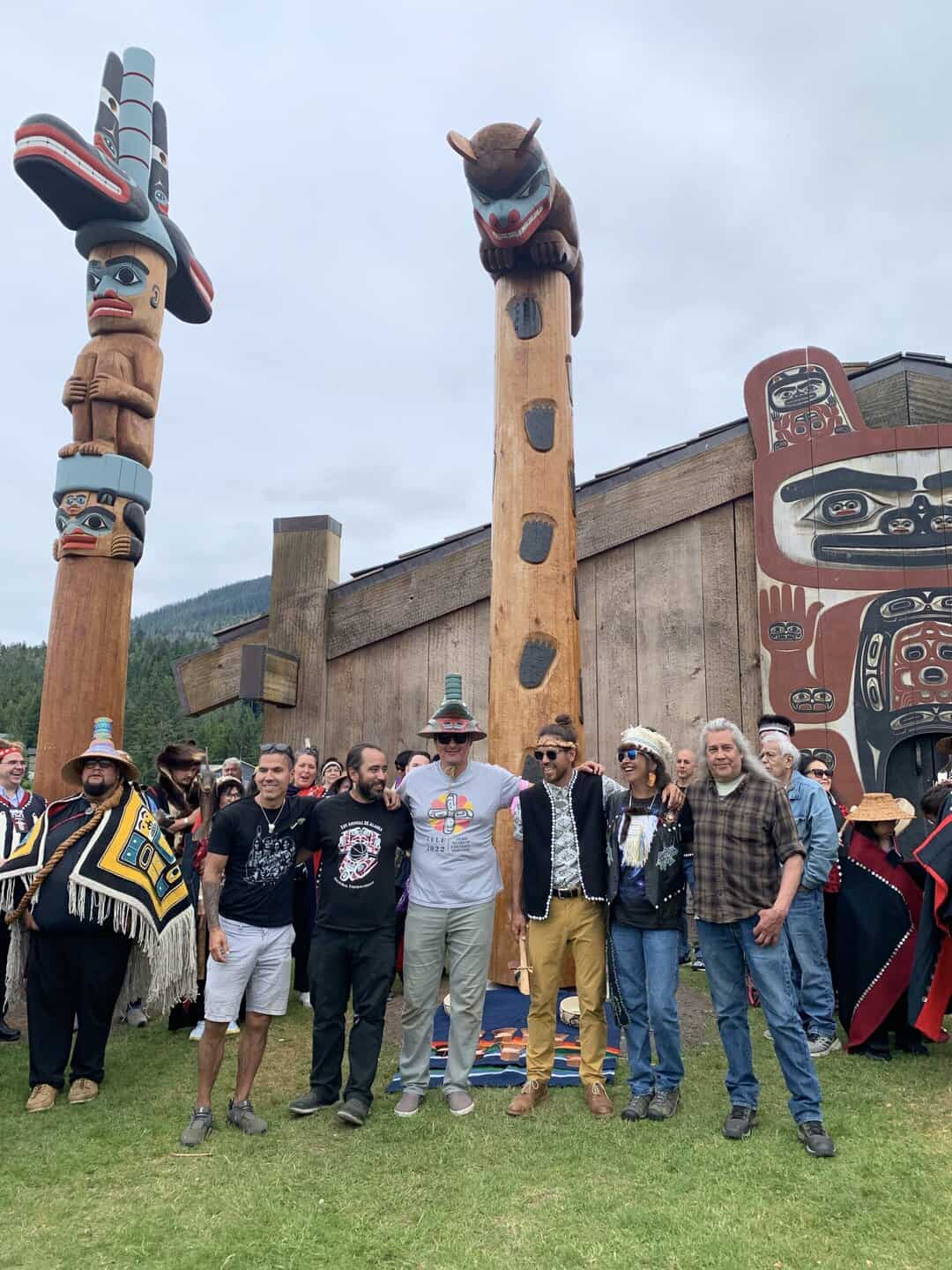Reviving carving traditions and community collaboration
A community totem pole raising is rejuvenating to the mind, body and spirit. It connects us with our culture and we can feel our ancestors surrounding us.
When it comes to standing the pole, many hands make light work. Over the summer people in communities throughout Southeast came together to be a part of the time-honored tradition.
In Hoonah, Kaach Yaas Gordon Greenwald worked for five months to carve the Fishermen’s Pole with help from assistant Yang Dus Herb Sheakley and apprentices Whe Chee Louie White, Jr. and Kash Tinaa Cheynne Jack.
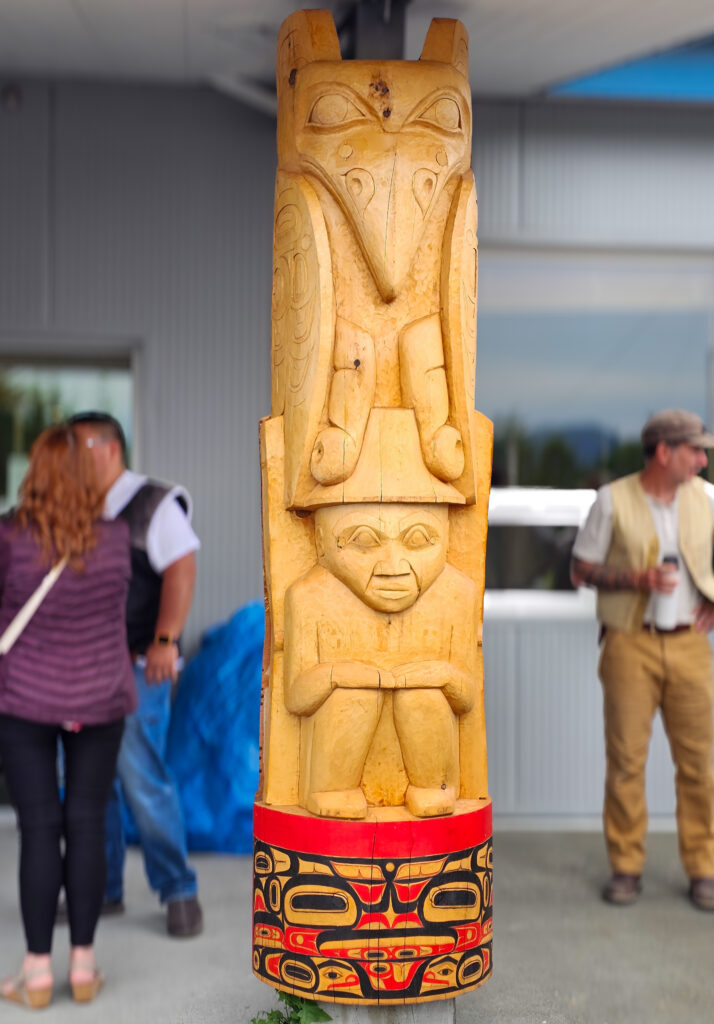
“This is what you’re looking at, the Hoonah fishing people. All of us in the past, all of us in the future and all of us now,” Gordon told the crowd gathered for the rainy unveiling.
Haida carver Reg Davidson completed carving the second totem pole for the people of Craig, proudly having it raised at the Craig Tribal Association.
The inspiration behind the Raven Pole was to bring balance to the first pole, an Eagle. With both the Eagle and Raven poles standing on each side of the building, the Craig Tribal Association feels complete.
The Generations Southeast Prince of Wales Campus located in Klawock, Alaska unveiled a new Raven and Eagle house post carved by Jon Rowan as a representation of the town.
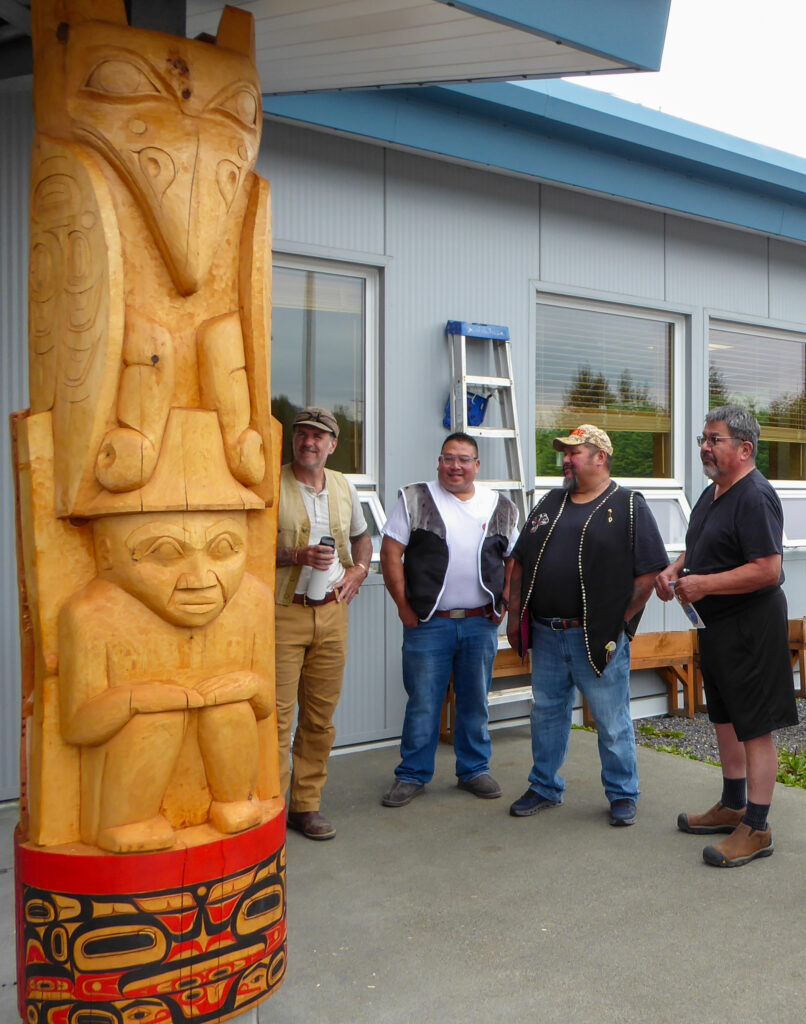
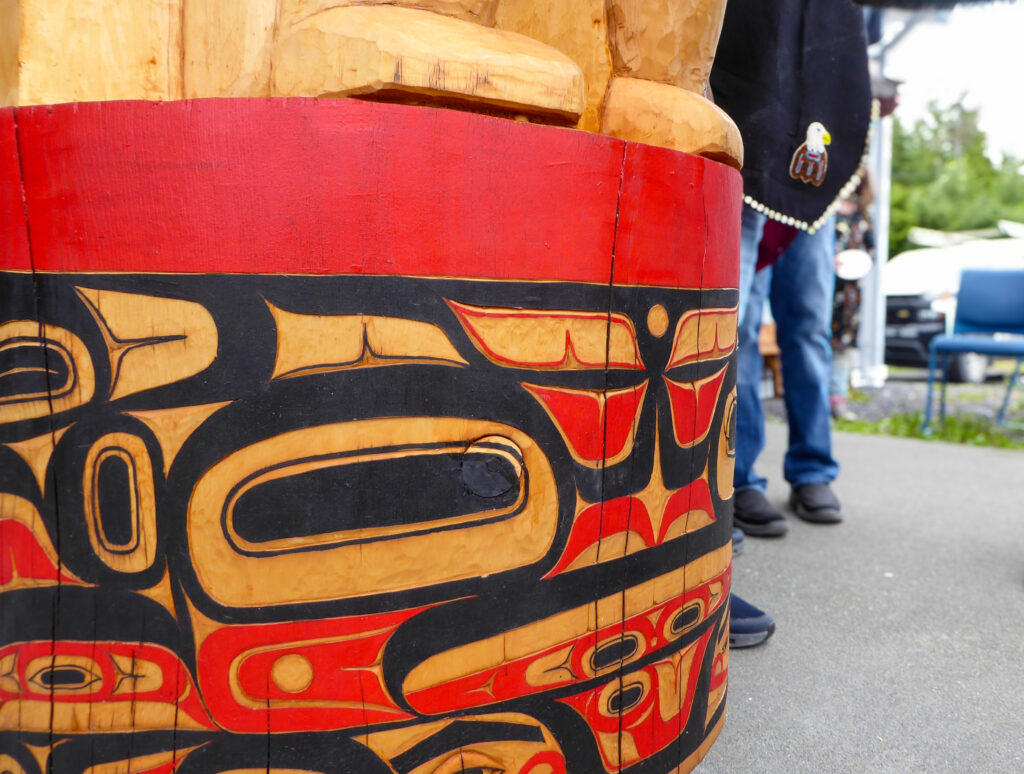
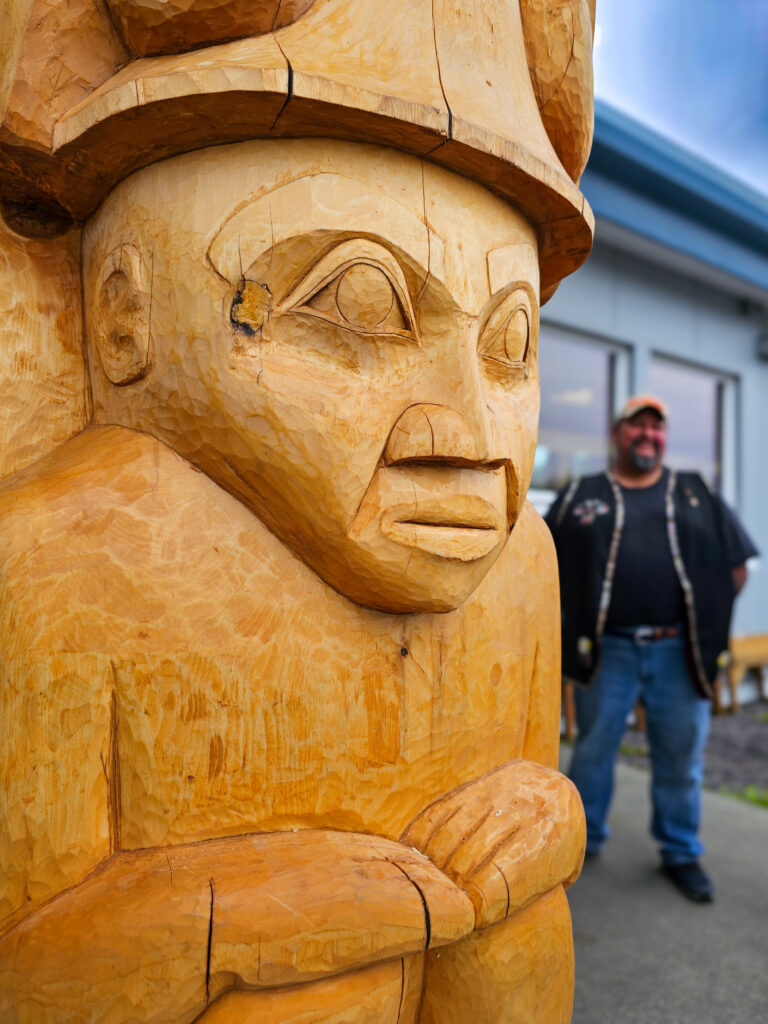
A unique take on a traditional house post, it showcases a 360-degree design with the Raven side facing outward to greet visitors as they come in and the Eagle side faces inward to wish those same visitors farewell when they leave.
In early August, people in Angoon came together to raise a new pole for the Kéet Oox̱ú Hít (Killer Whale House) of the Daklʼaweidí clan.
Near Gustavus, the Hoonah Indian Association put up two new kootéeyaas in the Glacier Bay homeland: Haá Léelk’w Hás Aaní Kootéeyaa (Our Grandparents Land Totem Pole) and Haa Léelk’w Hás Éil’i Kootéeyaa (our Grandparents’ Ocean Totem Pole).
Wrangell saw its first totems raised in nearly 40 years; three on Shakes Island, a Killer Whale Grave Marker at the U.S. Post Office and a replica of the Kadashan Pole raised by the community at Totem Park.
The community events were part of the Wrangell Cooperative Association’s project to work with master carvers to teach the art of totem pole carving to local apprentices. Haida carvers TJ Young and Joe Young, along with Tommy Joseph, mentored Mike Hoyt, Tony Harding, Linda Churchill and Susie Beebe.
Mike said new totems show Wrangell is embracing its Indigenous roots. “I think it’s important for people to see reminders of the culture, of the land, of the history of the land and totem poles are a great representation of that,” Mike said.
The master carver–apprentice program doesn’t just teach carving—it nurtures identity, resilience, and leadership. The installation of totem poles around Southeast Alaska are an investment in cultural continuity and community strength for generations to come.
Tlingit & Haida has published the 2025 Q3 Newsletter. It is mailed to those who want to receive a printed copy and also published online to help reduce print costs. Read the Q3 Newsletter and all previous newsletters online: https://tinyurl.com/TlingitHaidaQ3.
